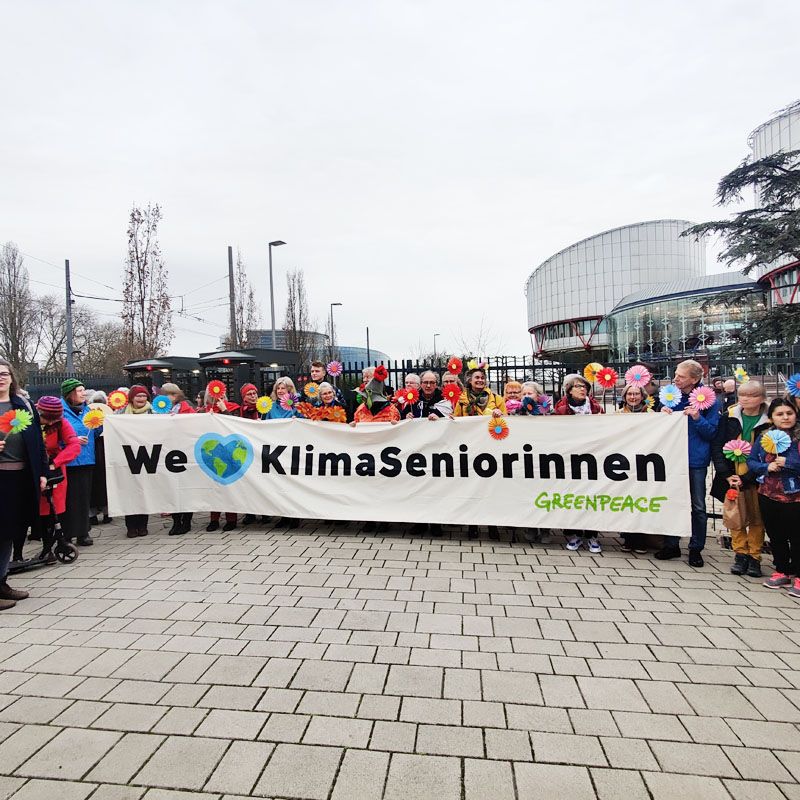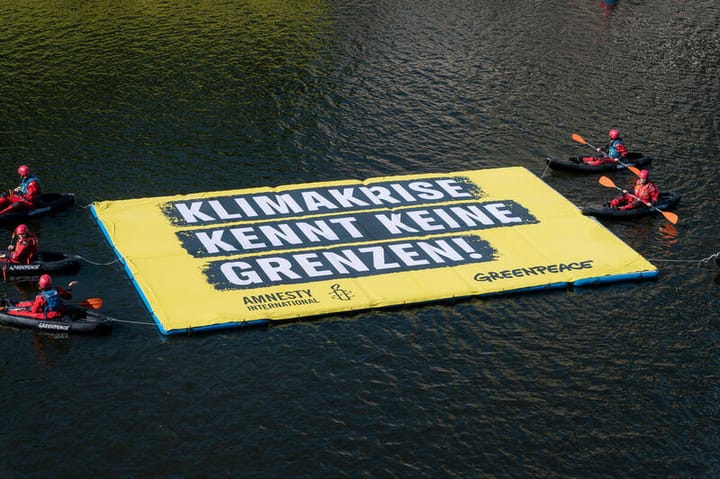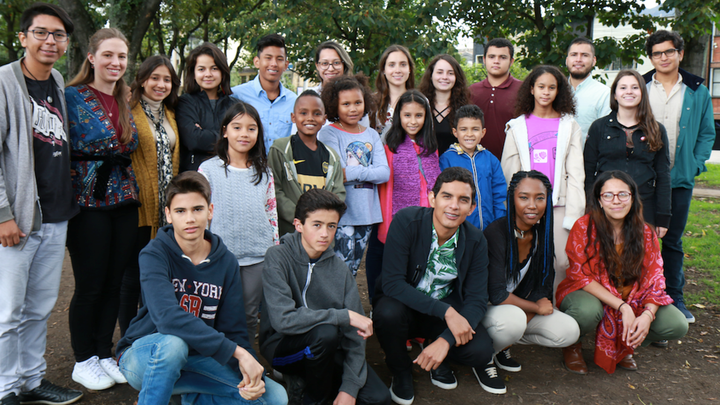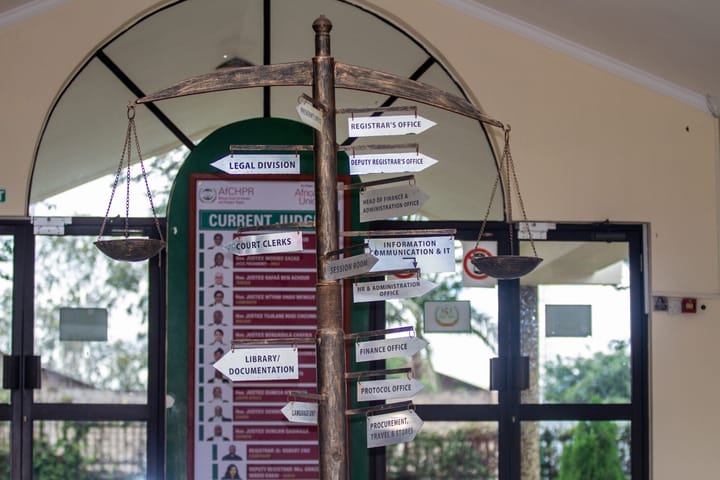Climate change is forcing human rights courts to rethink their role

Forty years ago, white storks were under threat in the French region of Alsace.
The huge birds, with their distinctive red streaks of beaks, were victims of habitat loss, pesticides, drought, hunting and electrocution across their migratory routes, and had nearly been relegated to emblem status on regional signs and novelty teatowels.

But numbers are now growing again. That is partly due to decisions made by conservationists and other local people to build platforms to encourage nesting in trees and reroute electrical cables.
The European Court of Human Rights, which sits in the Alsatian city of Strasbourg, is arguably faced with a similar dilemma.
The court is tasked with upholding the European Convention on Human Rights, something it has been doing for nearly 70 years, and has just heard its first lawsuits on climate change.
Last week, a panel of 17 judges sitting in the court’s Grand Chamber - reserved for the most important cases that raise novel points of law - heard petitions from a group of older women known collectively as the KlimaSeniorinnen against Switzerland, and Damian Carême, the former mayor of a French coastal municipality against France and now an MEP.
They all claim their human rights are being breached due to rising global temperatures and the resulting climatic impacts.
I covered the arguments made in these lawsuits, some of their potential political implications and the science behind the Swiss case in other publications.
However, that’s only the beginning of the story.
'Living instrument'
As well as hearing the arguments put forward during refreshingly succinct hearings by the claimants and third parties, the court had the opportunity to ask questions.
In Carême’s case, this was largely tussling over whether the French MEP's residency and whether or not owned his coastal home.
But when it came to the Swiss seniors, judges asked questions that sought to get to the heart of the science behind the case and whether the individual women really could be considered victims now or in the future.
And what, they wanted to know, was the role of their court in all this?
The European Convention on Human Rights itself does not explicitly mention the environment and the court has not made any judgments yet about the obligations of states in relation to climate change.
However, according to a recent report from NGO CAN Europe, the Council of Europe has made a “clear acknowledgement over the years of a link between human dignity, human rights and the environment”.
The court itself has interpreted the convention as a “living instrument” which, says CAN Europe, “means that several of its provisions now apply to situations that were unforeseeable at the time of its original adoption - including on environmental issues”.
In the face of an escalating crisis brought on by human actions and with very real human consequences, judges are now having to ask themselves whether the court can use its existing architecture and tools to tackle climate change.
Or would such a move, like this tortuous extended metaphor, go too far?
"Few people have it in their power to change the course of history"
In a statement to the court during the KlimaSeniorinnen hearing, Jenny Sandvig, policy director at the Norwegian National Human Rights Institution, argued that it "would be consistent with the proper role and function of the court" to review the adequacy of a state's emission reductions. She referred to domestic court decisions upholding human rights, and said scrutiny of emission cuts would strengthen democracy and be consistent with international law.
Speaking on behalf of the European Network of National Human Rights Institutions, Sandvig urged judges to use their power "to protect vulnerable individuals from irreversible and escalating climate harm".
"Few people have it in their power to change the course of history," she said. "You do."
But the defending states, backed by strong interventions from other governments - particularly Ireland - were adamant that these were questions for national policymakers and judiciaries and said the court should not overstep its bounds or the limits of the convention.
The rulings are expected to be issued some time next year, likely making the European Court of Human Rights the first regional court to adjudicate a climate case.

For the KlimaSeniorinnen, the decision cannot come too soon. Since they first launched their domestic court case in 2016, 48 members of the association have died. At an event following their Strasbourg hearing last week, the women honoured former members who did not live to see the end result of their efforts, particularly Ursula Brunner, the environmental lawyer behind the initial lawsuit together with Cordelia Bähr.
If judges agree with campaigners, they could order the governments in question to take more stringent action to cut domestic emissions - and their rulings are legally binding.
A positive ruling could even go further, compelling all European states to revise their climate policies to avoid breaching their citizens’ human rights. “The cases are not just relevant to the states addressed in the petition but to all European states as they share the same legal obligations under the European Convention for Human Rights,” says Sébastien Duyck, human rights and climate campaign manager for the Center for International Environmental Law.
Another immediate effect of these judgments will be on other climate cases pending at the European Court of Human Rights.
The court has already ruled two such cases brought against the UK government as inadmissible; one brought by climate activists Plan B and the other by animal rights NGO Humane Being. It did not give reasons for doing so.
However, eight other climate-related cases are still on its books.
One, filed by six Portuguese young people against 33 countries, including all EU member states, Norway, Switzerland, the UK, Ukraine, Russia and Turkey, will be heard after the summer. The case against Ukraine since has been dropped.
The group, led by 23-year-old Cláudia Duarte Agostinho, claims that government inaction on climate change discriminates against young people and poses a tangible risk to their life and health. Their case was sparked by forest fires that killed more than one hundred people in Portugal in 2017 and which were worsened by climate change.
The legal team behind the case was in court last week, and is now thinking carefully about how to present its arguments and preparing for the kinds of probing questions the judges might ask. It is also considering how to prepare the young people (one of whom is only 10) from the intense attention other litigants have attracted.
Anjali Sharma, for example, received abuse while fronting a high-profile (and ultimately failed) case against the Australian government. Others have been subject to intrusive media scrutiny.
Seven other cases have been adjourned until the court has ruled on the first three:
- The highest profile lawsuit is probably that brought by Greenpeace Nordic against the Norwegian government, which seeks to prevent the expansion of fossil fuel extraction in the Arctic.
- A separate case, brought by a group of Norwegian grandparents, challenges Norway on the same issue.
- A case is being brought against the Austrian government by a man with a temperature-dependent form of multiple sclerosis who argues, like the Swiss women, that this makes him particularly vulnerable to heatwaves.
- A pair of related lawsuits are led by two young Italian women, who were 18 and 20 when they filed in 2021. As in the Duarte Agostinho case, they’re challenging all members of the Council of Europe, saying storms, forest fires, flooding and heatwaves have affected them physically and psychologically.
- Five people from France, Cyprus, Belgium, Germany and Switzerland are taking action against 12 states, arguing that membership and use of the Energy Charter Treaty prevents governments from taking immediate measures to tackle climate change and therefore makes it impossible to achieve their Paris Agreement goals.
- Nine teenagers and young adults say the German Climate Protection Act, an amended version of which entered into force on 31 August 2021, is not strong enough to meet climate targets in line with the Paris Agreement. This case is a follow-up to Germany's Federal Constitutional Court’s landmark judgment in Neubauer, which ordered the government to amend the act to comply with its climate targets.
Duyck says the fact that these cases have not been dismissed suggests the court is taking them seriously. But this is all “unchartered territory", Annalisa Savaresi, associate professor in international environmental law at the University of Eastern Finland, tells The Wave.
Unchartered territory
Depending on how the first judgments go, these other cases could be dismissed. They could also raise further important points of law and be referred in turn to the Grand Chamber.
Or judges could set a framework for evaluating these kinds of cases and refer them to smaller judicial panels, with climate litigation eventually becoming part of the ‘bread and butter’ routine of the court’s work.
Gina Gylver, head of Young Friends of the Earth Norway and one of the young people behind the first complaint against Norway, said she saw it as a "positive development if the court first wants to establish the scope of state responsibility to protect human rights in the face of the climate crisis".
Even if all these cases fail, however, there are others in the pipeline. “Lack of success would be important to understand which litigation strategies might or might not work," says Savaresi. "So the applicants and their legal counsels will learn lessons from the courts’ decision, whether it hears these specific cases on the merits, and whether it decides in favour of the applicants or not.”
Duyck agrees. “One can only expect more cases to be submitted to the court and other judicial bodies as long as governments fail to uphold their obligations and to take the necessary measures to tackle the root causes of climate change.”
However, Savaresi warns that a positive ruling by the European Court of Human Rights does not automatically protect the environment or people’s health. In 2019, Italian authorities were found to have failed to protect those living near a factory from the toxic emissions it was spewing - but the court has since rebuked Italy for not fully implementing its judgment.
This is a “cautionary tale of how even victories in Strasbourg may not be enough to persuade recalcitrant states to take convincing action to remedy egregious environmental harms”, says Savaresi.
"One can only expect more cases to be submitted to the court and other judicial bodies as long as governments fail to uphold their obligations and to take the necessary measures to tackle the root causes of climate change.”
Whatever the court decides is likely to resonate beyond the borders of the Council of Europe.
Kelly Matheson, deputy director of global climate litigation at Our Children’s Trust, which is advising on climate science in the first three cases before the court, said the ruling would have a “profound effect on courts throughout the world as their finding will inform and influence the decision made in other judicial processes”.
There is a lot of cross-fertilisation happening between courts around the world, particularly those dealing with human rights.
The Inter-American Court, for example, is expected to be the first regional human rights tribunal to develop an advisory opinion on the climate emergency following a request submitted by Chile and Colombia.
Maria Antonia Tigre, global climate litigation fellow at the Sabin Center for Climate Change Law, says the court has shown itself to “be quite comfortable” with analysing environmental issues. In 2017, it issued an opinion stating that the right to a healthy environment is a human right.
“Because of this slow progression towards environmental rights - and a progressive understanding of it nonetheless - I would envision the court to remain comfortable in that arena,” says Tigre.
The storks came back to Alsace. And in September, following what could be another summer of record-breaking hot temperatures, a new generation will set out why they are uniquely vulnerable before the European Court of Human Rights.
Duarte Agostinho, together with her co-claimants and legal team, will have some major hurdles to overcome, particularly the requirement to have exhausted all legal remedies in the countries they are accusing of breaching their rights.
But they will not be alone; some of the older Swiss women who fought the first case in front of this influential court have promised to attend.
“This is a long game which has only just started, says Savaresi. “For sure the story of climate litigation before the European Court of Human Rights is yet to be told.”
This article was amended to clarify that the Duarte Agostinho case has been dropped against Ukraine, not Russia, and the youngest plaintiff is ten, not 11.



